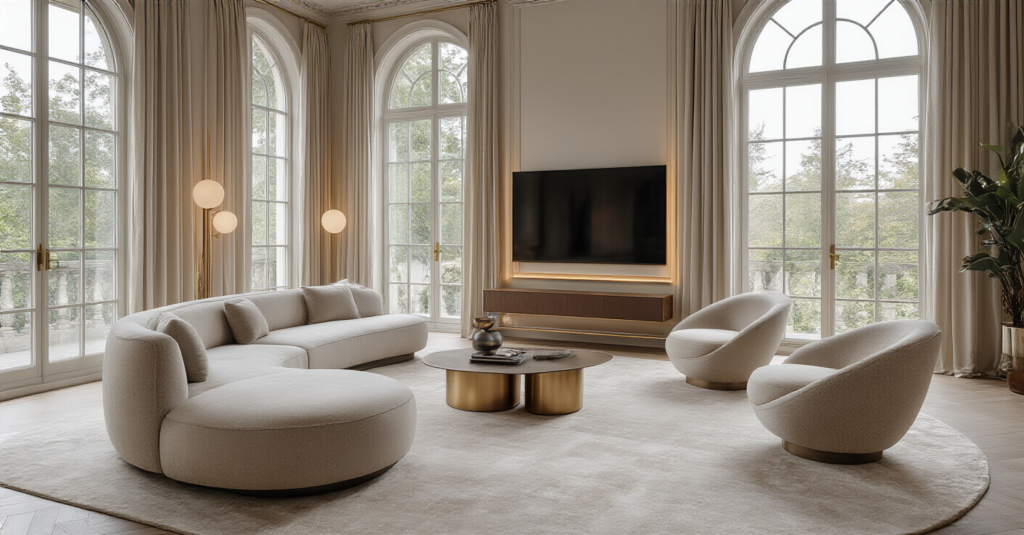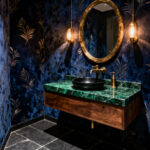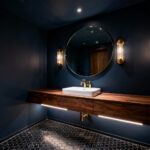You know what people always ask me? They want to know the secret to a “luxurious” living room. And they expect me to start talking about Italian marble and designer sofas that cost more than a car.
But that’s not the real story. That’s just corporate speak for “expensive.” True luxury isn’t about the price tag; it’s about how a space makes you feel. It’s a room that calms your nervous system the moment you walk in. It’s a space that supports your health, helps you connect with your loved ones, and gives you a genuine sense of peace. That’s the ultimate luxury, and it has very little to do with what you spend. So, let’s talk about what actually matters when you’re creating a room that truly nurtures you, from the foundation up.
Laying the Grand Foundation: Strategic Planning & Layout
Before you even think about a paint chip or a fabric swatch, you have to get the bones of the room right. The flow, the scale, the very intention of the space—this is the invisible architecture that dictates how you’ll feel every single day. Get this part right, and everything else will fall into place with a sense of ease and rightness.
1. Let Your Space Breathe with Smart Furniture Placement
The biggest mistake I see is furniture pushed up against every wall like the room is in a time-out. People think this makes a room feel bigger, but it actually does the opposite. It creates a dead zone in the middle and makes the whole space feel static and tense. Your brain craves flow. It wants to see clear pathways. When a room has good “bones,” you can move through it effortlessly, and that sense of ease translates directly to your mental state.
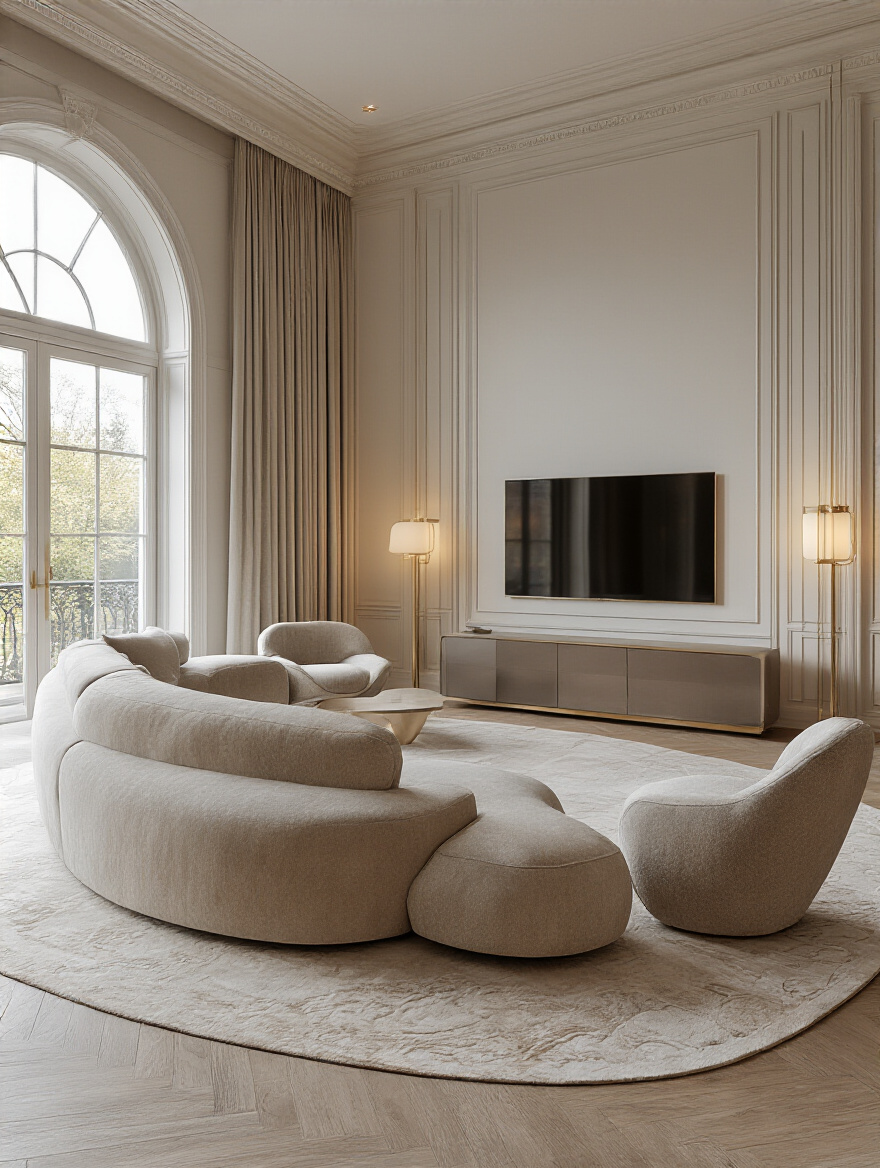
What actually matters is creating “breathing room” for your energy and your eyes. Floating your sofa just six inches off the wall can change everything. It creates a sense of airiness and intention. The goal isn’t to cram things in; it’s to create functional, inviting zones. A cozy conversation area. A quiet reading nook. When furniture is thoughtfully placed, it gently guides you through the space and creates a sense of calm order that your nervous system will thank you for.
And now that you’ve created pathways for movement, let’s define the feeling you want the room to evoke.
2. Define Your “Wellness Vibe” to Guide Your Choices
Can we please stop talking about “aesthetics”? That word has become all about copying a look from Pinterest. Let’s talk about how you want to feel. Do you need your living room to be a calm sanctuary after a stressful day? Or an energizing hub for your family to connect in? Maybe you need both. Answering this is the most important decision you’ll make, because it becomes the compass for every other choice.

Forget creating a “mood board” and instead create a “feeling board.” A client of mine once said she wanted to feel “like being wrapped in a warm hug on a rainy day.” That told me everything I needed to know. We chose deep, soft textures, warm lighting, and natural materials. We didn’t choose a single thing because it was “Parisian Chic” or “Modern Glam.” We chose it because it supported her vision of a hug. This is the shortcut: define the feeling first. The style will follow naturally.
Once you know the feeling, you can choose the most important piece of furniture in the room.
3. Invest in a Sofa That’s Actually Healthy
Your sofa is the heart of the room, and it’s where you spend a huge amount of time. So here’s a confession: I used to think a “good” sofa was just about a solid frame and nice fabric. Then I dug into the research on wellness architecture and was horrified. Most mainstream sofas are filled with polyurethane foam, which is a petroleum product that can off-gas volatile organic compounds (VOCs) for years. They’re also often treated with toxic flame retardants. You’re literally breathing that in while you binge-watch your favorite show.
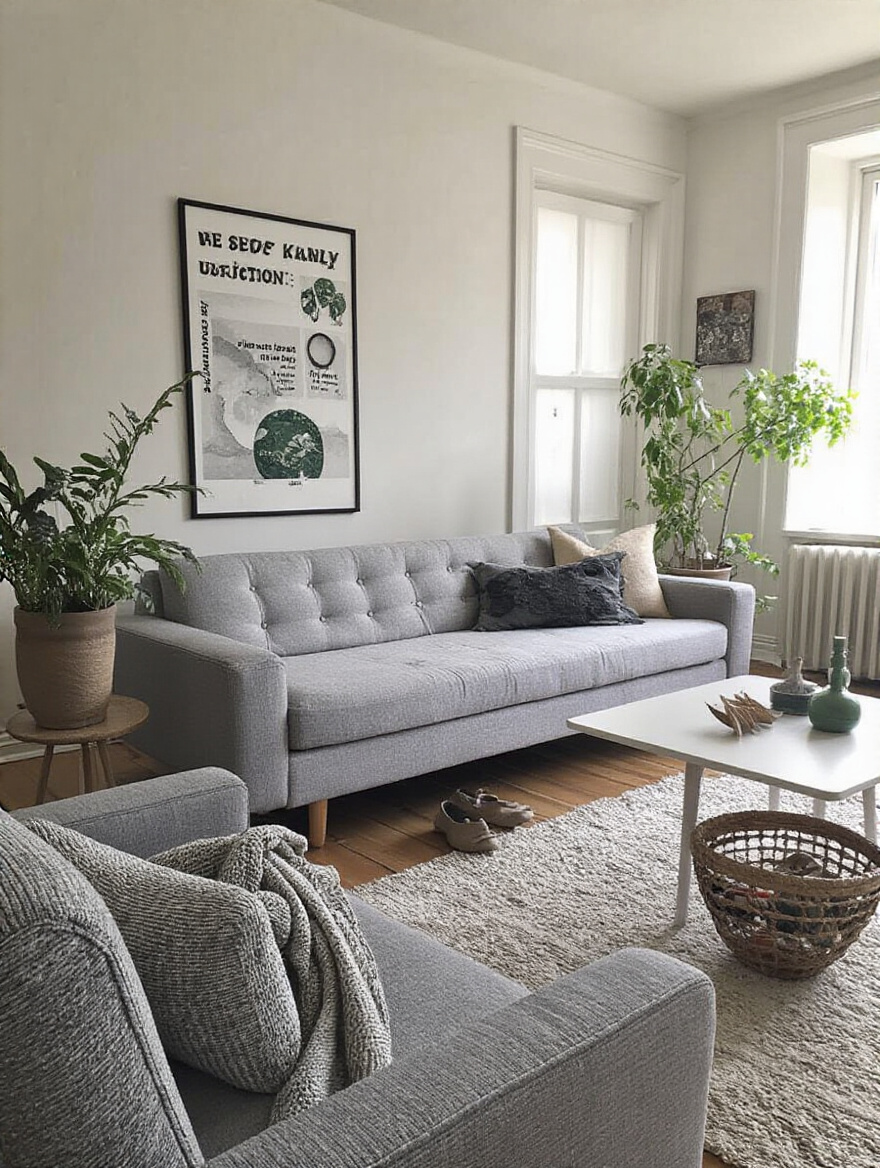
The real luxury is knowing your furniture is supporting your health, not quietly harming it. When you invest in your cornerstone seating, look for what’s inside. Ask for natural latex cushions, solid wood frames with no formaldehyde, and upholstery made from natural fibers like linen, hemp, or organic wool. Yes, it can be a bigger upfront investment, but it’s an investment in your family’s health and the air you breathe every day. I had clients whose persistent allergies all but vanished after we swapped their cheap, off-gassing sectional for a truly natural one.
With that healthy anchor piece in place, let’s look at how to organize the space around it, especially in an open-concept home.
4. Create “Psychological Rooms” with Smart Zoning
Open-concept living is great, but it can also feel like you’re living in a gymnasium. Your brain actually needs defined spaces to help it switch gears. A single, vast room where you work, eat, relax, and entertain can create a low-grade sense of chaos and make it hard to focus or unwind. The key is to create “rooms within a room” without putting up walls.

This is all about subtle cues. A large area rug can instantly define a conversation zone. A console table placed behind a sofa creates a soft boundary and a sense of entry. Different lighting schemes can signal a shift in function—brighter over a workspace, softer and warmer in the lounge area. By creating these distinct zones, you’re giving your mind permission to be fully present in each activity, whether it’s focusing on a book or connecting with a friend.
And a key part of defining those zones is the thoughtful use of color.
5. Use Color to Calm or Energize Your Mind
Color isn’t just decoration; it’s a powerful psychological tool. The right colors can literally lower your blood pressure, while the wrong ones can be agitating or draining. So many people just slap a trendy color on the wall without thinking about how it will impact their nervous system every single day. A high-energy red might look great in a magazine, but living with it can feel like a constant state of alert.
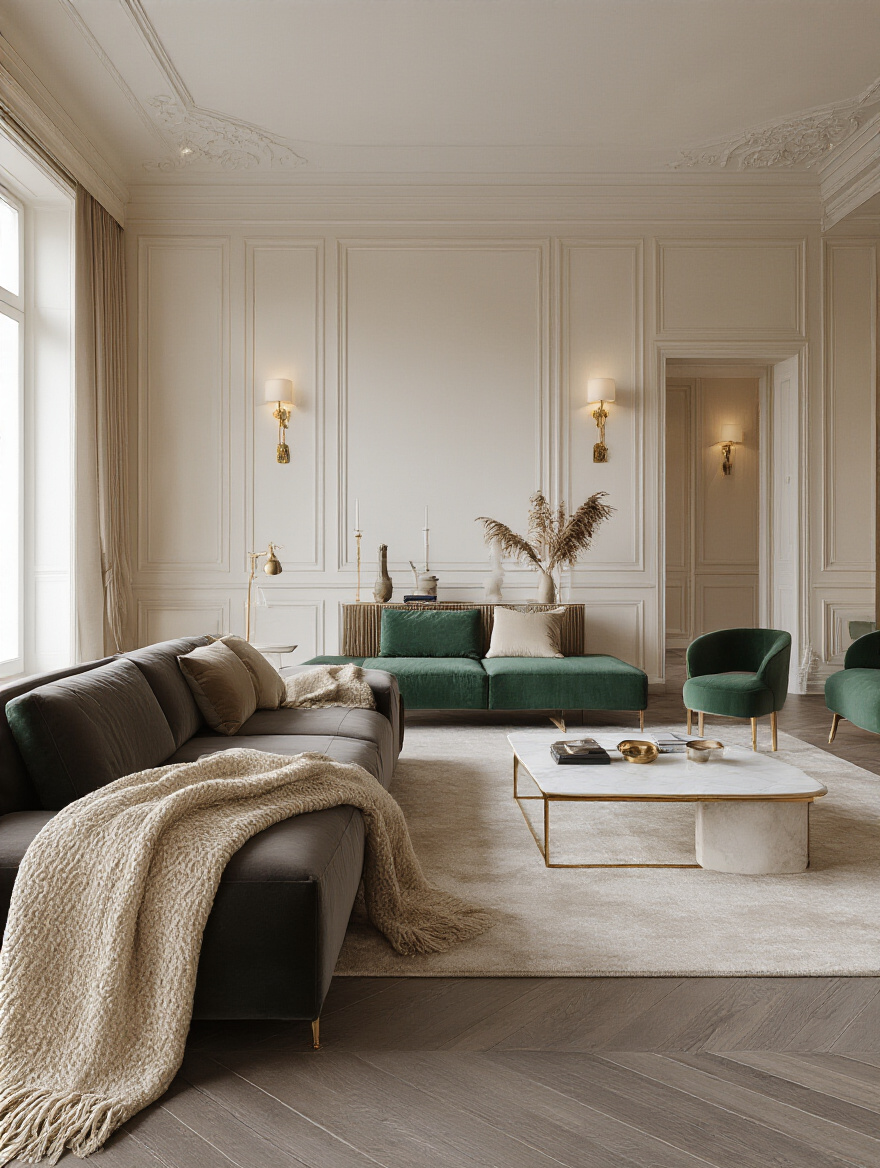
Instead, think about color in terms of energy. Blues and greens are fantastic for creating a sense of calm and connection to nature—that’s biophilia at work. Soft, earthy neutrals provide a grounding, stable foundation. You don’t have to live in a boring beige box, but you should anchor your space in colors that soothe you. Use small pops of more energetic colors—a vibrant yellow cushion, a piece of art—as accents you can look at when you want that jolt of energy, rather than having it forced on you all day long.
Indulging in Natural Materials and Mindful Craftsmanship
This is the part that’s so often mistaken for opulence, but it’s really about sensory nourishment. We’re going to talk about bringing materials into your home that feel good to touch, connect you with the natural world, and are crafted with a level of care that you can feel. This isn’t about showing off; it’s about delighting your own senses.
6. Choose Natural Textiles That Let Your Skin Breathe
Can we talk about how everyone gets textiles wrong? They fixate on high thread counts or trendy patterns while ignoring what the fabric is actually made of. Your skin is your largest organ, and draping it in polyester—which is essentially a plastic—traps heat and static electricity and just doesn’t feel good. Real luxury is a fabric that breathes with you.
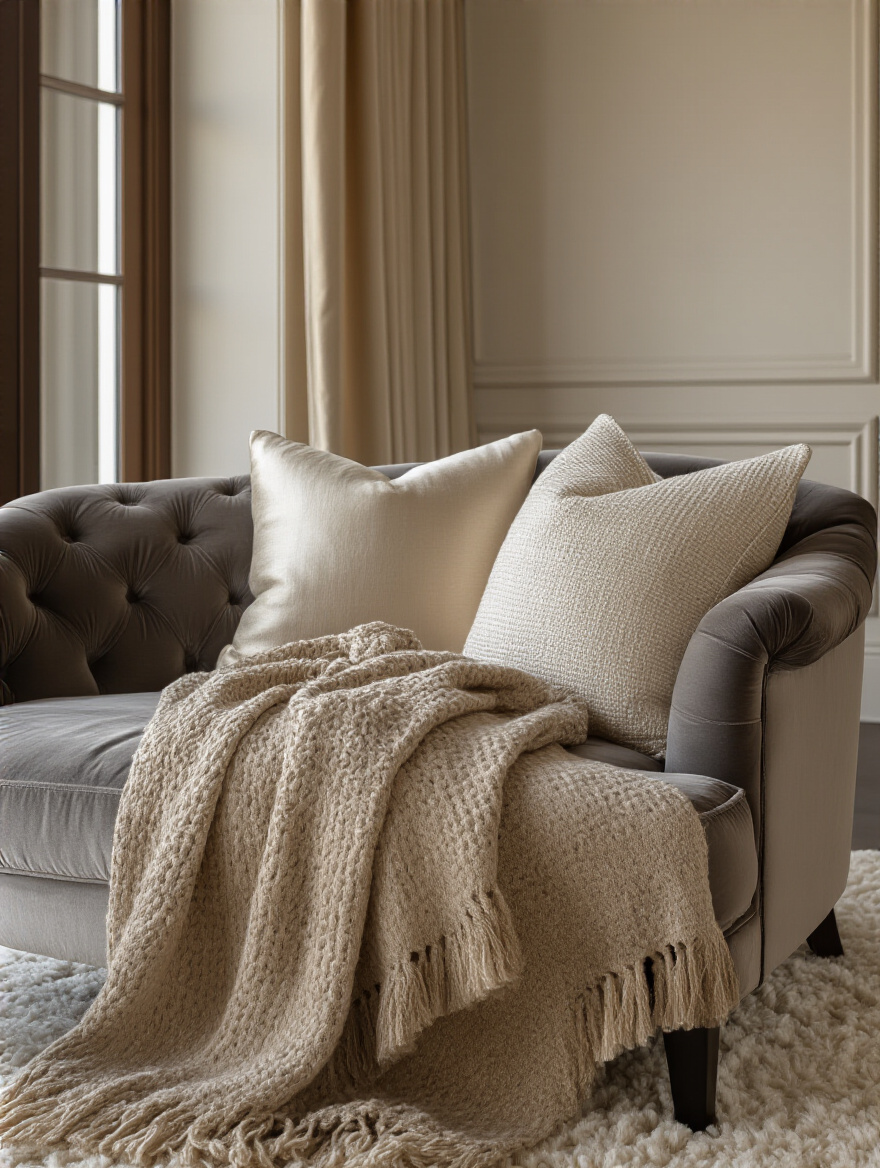
Think about materials that come from the earth. The cool, crisp feeling of pure linen on a warm day. The soft, grounding weight of a wool throw. The subtle texture of organic cotton. These materials don’t just look good; they have a different energy. They connect us back to nature, which has a demonstrably calming effect on our bodies. Swapping out a few synthetic throws and pillows for natural ones is one of the fastest, easiest ways to make a room feel healthier and more genuinely luxurious.
That connection to nature extends beyond just fabrics to the core materials of the room itself.
7. Add Grounding Elements with Natural Stone and Wood
In wellness design, we talk a lot about “grounding.” It’s the idea of connecting with the earth to feel more stable and centered. You can bring that feeling directly into your living room. A heavy stone coffee table, a solid wood mantle, even a beautiful piece of driftwood on a shelf—these aren’t just decorative items. They are pieces of the earth.

Their visual weight provides an anchor for the room, but their real power is tactile. Running your hand over the cool, smooth surface of marble or the rich grain of walnut connects your sensory system to something real, ancient, and permanent. Our brains are hardwired to find comfort in these natural patterns and textures. You don’t need “rare” or “exotic” materials; you just need real ones. This is the simplest way to add a layer of authentic, timeless substance to your space.
Just as real wood is more nourishing than laminate, a piece of furniture made just for you is better than something mass-produced.
8. Commission Bespoke Pieces for a Perfect Fit—For You
“Bespoke” sounds intimidating, but all it really means is “made for you.” And this isn’t about vanity; it’s about function and wellbeing. Off-the-shelf furniture is made for an imaginary “average” person and an “average” room. But your body isn’t average, and your room has its own unique quirks. Why are you trying to fit a square peg into a round hole?
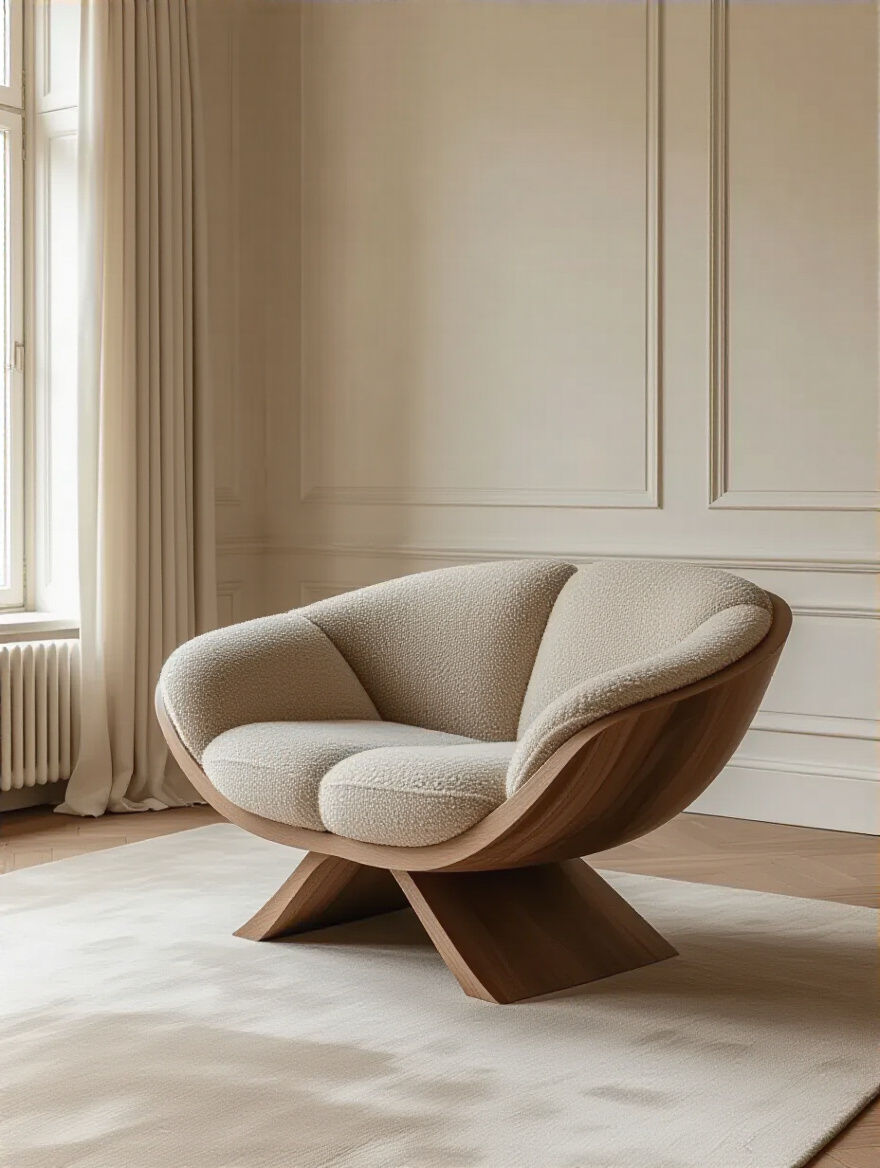
I learned this the hard way with a client who had a gorgeous but awkwardly shaped living room. For years, she’d tried to make standard furniture work, and the result was a space that felt cramped and clumsy. We commissioned a single curved sectional that perfectly hugged the weirdest wall, and it instantly unlocked the entire room’s flow and potential. A bespoke piece solves your specific problems, whether it’s an odd corner, a need for hidden storage to reduce mental clutter, or creating a chair that’s the perfect height for your body. That’s a luxury no brand name can offer.
As you consider custom pieces, think about how they interact with light and space through reflection.
9. Use Reflective Surfaces to Amplify Natural Light
This isn’t about creating a hall of mirrors from the 80s. This is a wellness strategy. Natural light is crucial for regulating our circadian rhythms, which control our sleep, mood, and energy levels. The more natural light you can bring into a space, the better you will feel. One of the best ways to do that is to bounce it around the room strategically.
A large, simple mirror placed opposite a window can literally double the amount of light in that area, and it brings the view of the outdoors inside, strengthening that connection to nature. But you can also think more subtly. A coffee table with a polished metal base, a high-gloss finish on a cabinet, or even a single silk pillow that has a natural sheen—all of these surfaces catch and reflect light, making the entire room feel brighter, more alive, and more spacious. It’s a simple trick with profound psychological benefits.
Let’s move from reflection to texture, transforming your walls from flat surfaces into something more.
10. Turn Your Walls into a Sensory Experience
Walls don’t have to be boring, flat surfaces. They are a massive opportunity to add texture, depth, and even acoustic comfort to your room. Think of them as the room’s skin. Do you want it to be flat and cold, or rich and inviting? Rich wallpapers and custom millwork aren’t about being fancy; they’re about engaging more of your senses.
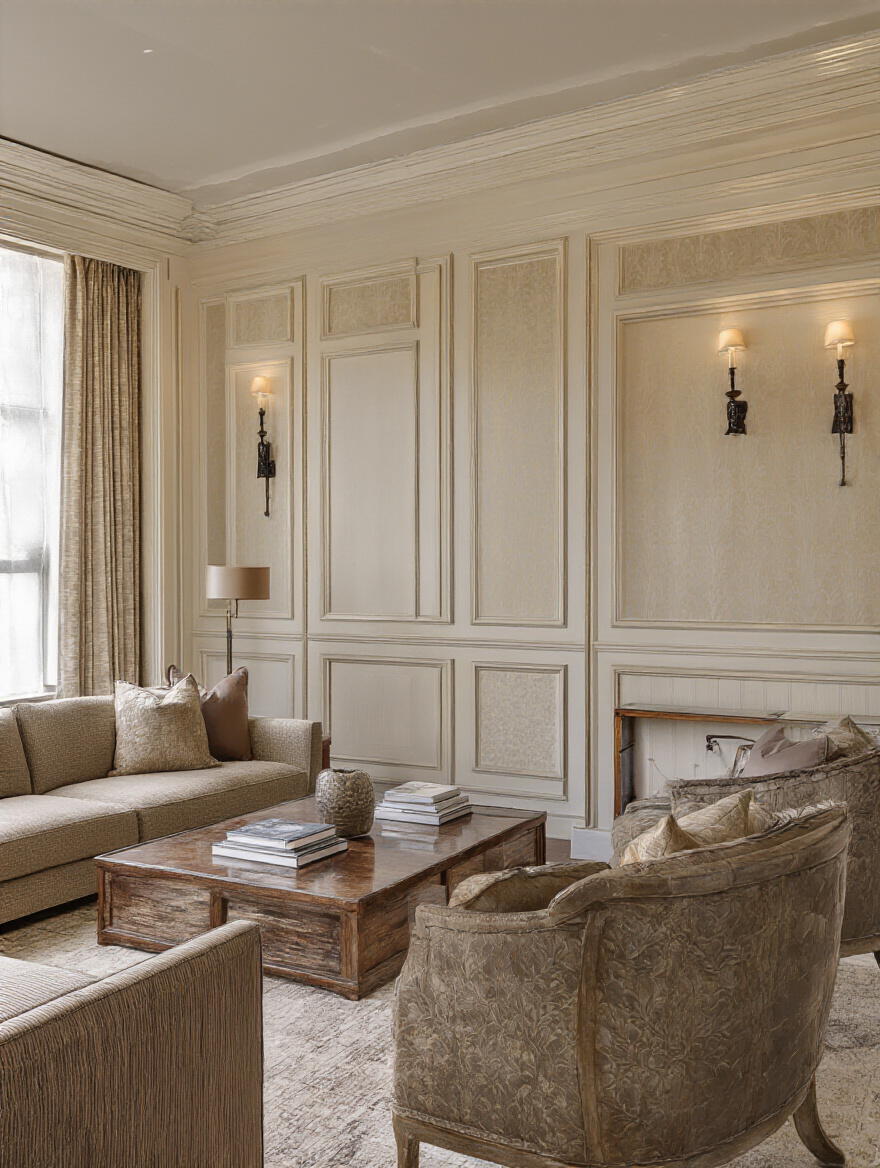
Consider a wallpaper made of natural grasscloth. It not only adds incredible visual texture but also helps absorb sound, making your living room a quieter, more serene space. I love watching clients instinctively reach out and touch a wall like this for the first time. The same goes for millwork like simple board-and-batten or elegant paneling. It adds a layer of architectural depth and shadow play that makes a room feel more solid, established, and thoughtfully designed. It’s a tactile experience that flat paint just can’t replicate.
Now let’s bring that sense of texture down to the floor.
11. Layer Rugs for a Foundation of Softness
A single rug is good. But layering rugs? That’s next-level comfort. This is one of my favorite shortcuts for making a room feel instantly more cozy, custom, and incredibly inviting. It adds a deep layer of visual texture and, more importantly, a physical softness underfoot that signals “relaxation” to your whole body.
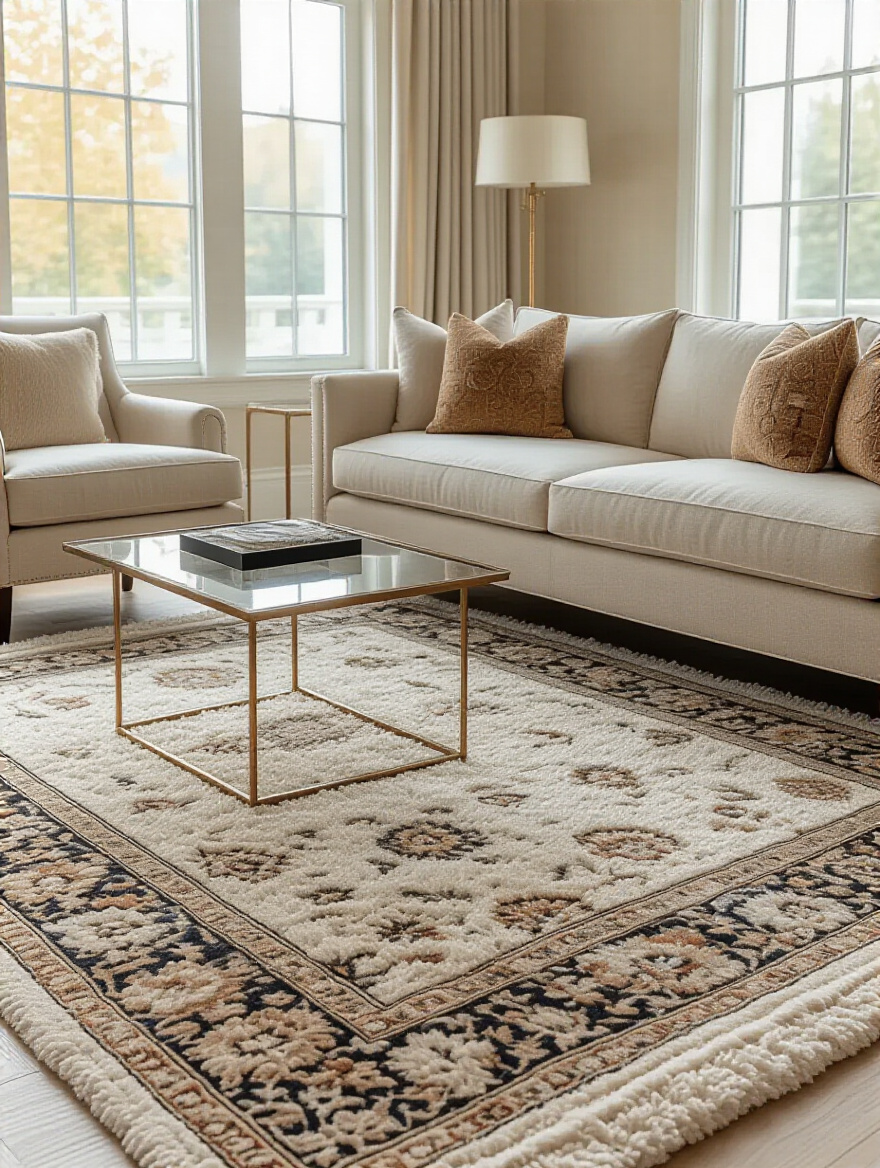
The trick is to start with a larger, neutral foundation rug—something like a simple sisal or a low-pile wool rug that defines your main seating area. Then, layer a smaller, plusher, and more textural rug on top. A fluffy sheepskin, a vintage Moroccan rug, or a high-pile shag works beautifully. It breaks up the large expanse of the floor, adds another dimension of pattern or color, and provides an extra layer of acoustic and thermal insulation. It just feels so much more intentional and welcoming.
Mastering the Art of Luxurious Illumination and Ambiance
Light is arguably the most powerful tool we have for influencing our health and wellbeing at home, and it’s the one most people get wrong. They install a single, harsh overhead fixture and call it a day. A truly healthy and luxurious space uses layers of light to sculpt the room, support your biological rhythms, and create any mood you desire at the touch of a button.
12. Create a Flexible Mood with a Three-Layer Lighting Scheme
You wouldn’t wear the same outfit to a board meeting and a yoga class, so why would you use the same light for every activity in your living room? The key to great lighting is layering. You need three distinct types of light that you can control independently: Ambient, Task, and Accent.
- Ambient Light is your general, overall glow. It’s the replacement for daylight in the evening. This can come from recessed lights, a soft chandelier, or cove lighting.
- Task Light is focused light for specific activities, like a floor lamp next to your favorite reading chair or a lamp on a side table. It prevents eye strain and creates cozy pools of light.
- Accent Light is the “jewelry.” It’s a small spotlight on a piece of art, a light inside a bookshelf, or an uplight on a plant. It creates depth, drama, and focus.
When you can play with these three layers, you have complete control over the room’s energy. You can go from bright and functional to low and intimate in seconds.
To make that first layer—the ambient light—feel seamless and sophisticated, you’ll want to integrate it right into the architecture.
13. Define Space with Architectural Recessed Lighting
Recessed lighting gets a bad rap because it’s so often done poorly—think a grid of harsh spotlights that makes your living room look like an airport runway. But when done right, architectural lighting is one of the most powerful and subtle tools in a designer’s kit. It’s about washing walls with light, not pointing it straight down into your eyes.
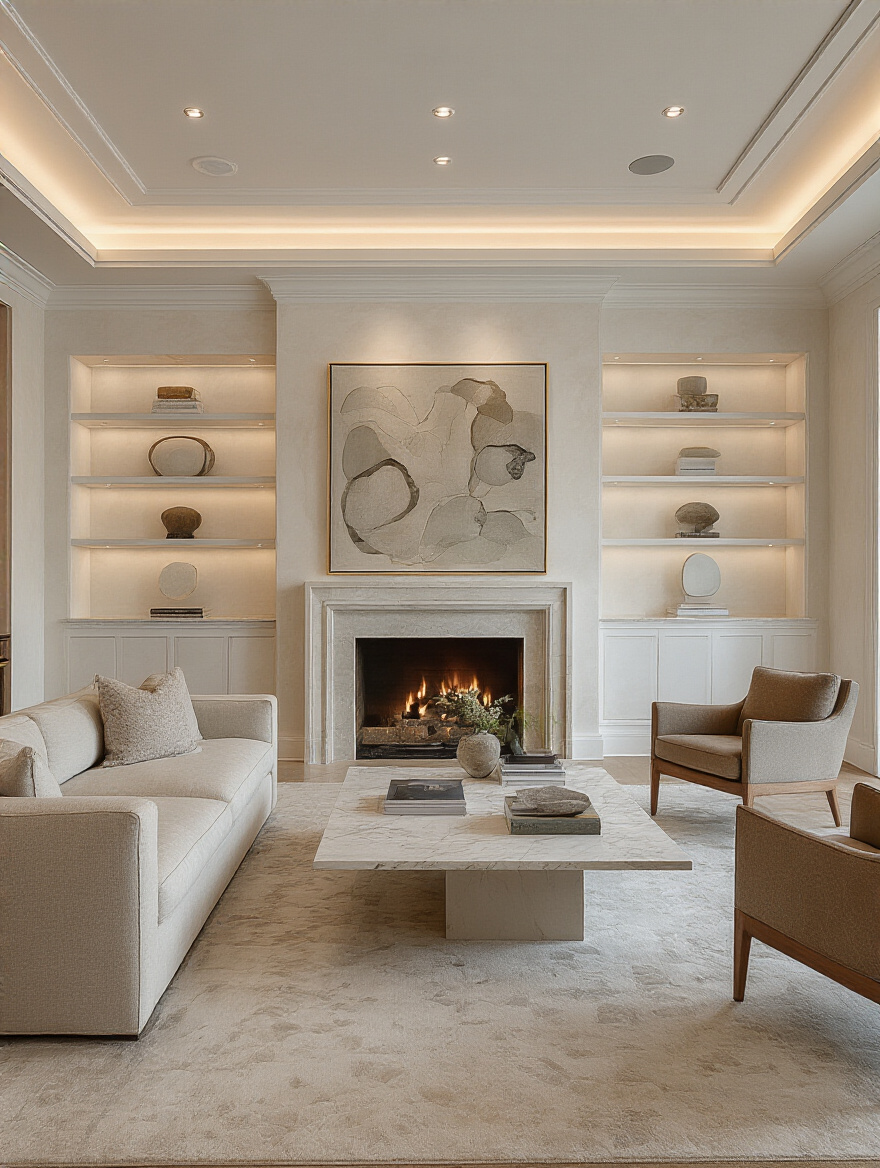
The goal is to provide a soft, even layer of ambient light that seems to come from nowhere. Using wall-washer recessed lights can make a room feel bigger by illuminating its boundaries. Placing a few focused lights can help define one of your zones, like creating a brighter “gallery” area on a wall of photos. The key is to think of these lights as part of the architecture, not as fixtures. And please, put everything on a dimmer. Always.
Once that subtle foundation is in place, you can add the “wow” factor.
14. Add Artistry with a Statement Chandelier or Pendant
While recessed lighting is the quiet workhorse, a statement fixture is the soul of your lighting plan. This is your chance to add a piece of functional sculpture to your room. It serves as a visual anchor, drawing the eye and establishing the room’s focal point and personality.
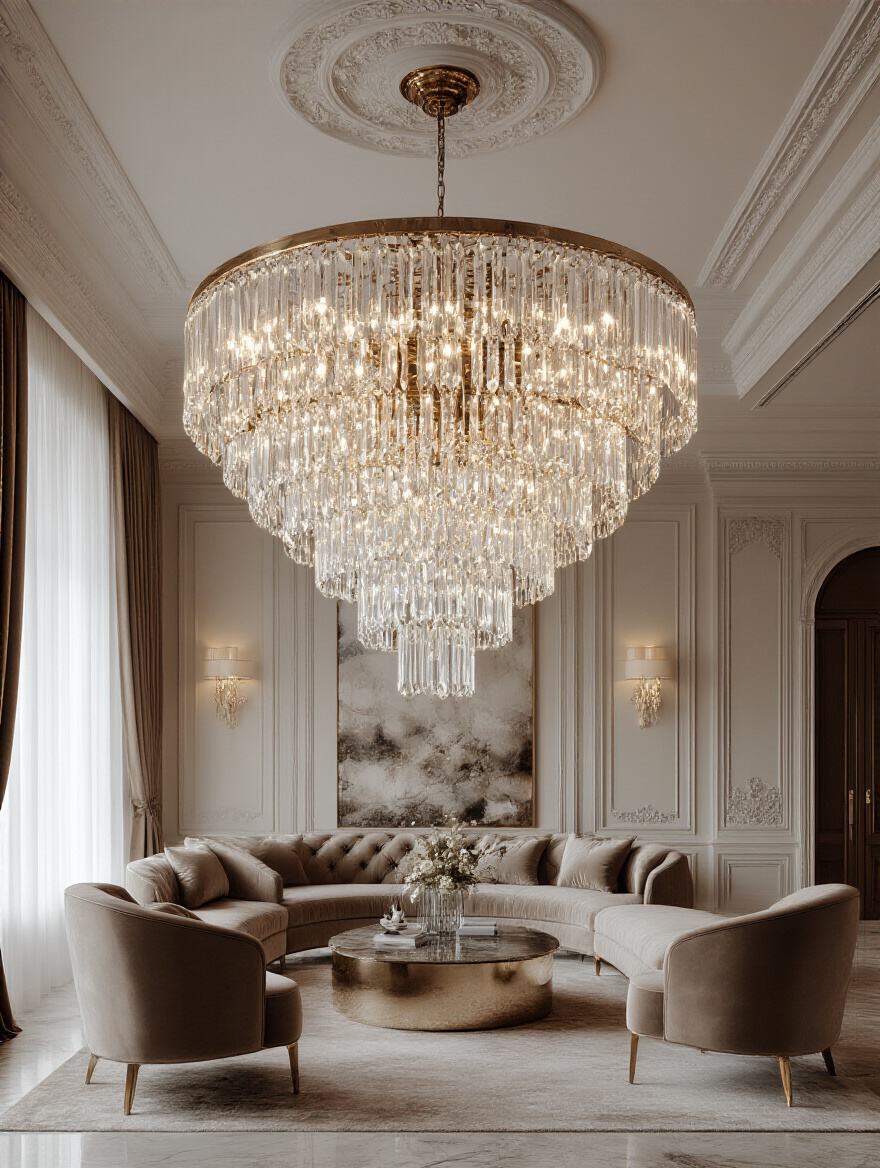
But here’s the BS everyone falls for: they think the chandelier has to light the whole room. It doesn’t. That’s what your ambient layer is for. The statement piece is there to provide a beautiful, warm glow right in the center of your main seating area. Its job is to be beautiful and create an intimate pool of light that encourages connection. Choose something you love to look at, whether it’s on or off.
To give you ultimate control over that chandelier and every other light, you’ll need the right kind of switch.
15. Gain Effortless Control with Smart Dimmer Switches
This might be the single biggest quality-of-life upgrade you can make in your home. Traditional switches are binary: on or off. Dimmers are better, but smart dimmers are transformative. They aren’t just about convenience; they’re about supporting your biology.

Our bodies are meant to experience bright, cool-toned light during the day and warm, dim light in the evening to prepare for sleep. With smart dimmers, and especially tunable white bulbs, you can automate this. You can create a “Good Morning” scene that gently brightens the lights to a cool white, and an “Unwind” scene that transitions them to a soft, warm amber glow in the evening. It takes the guesswork out of creating a healthy light environment. Automating this daily rhythm is a profound act of self-care.
Now let’s talk about that third layer of light: the accent.
16. Tell a Story with Dedicated Accent Lighting
This is where your home really starts to feel like a curated gallery of your life. Accent lighting is about using very focused beams of light to highlight the things you love—a beautiful piece of art, a collection of objects on a shelf, the texture of a stone fireplace. It creates contrast, which is what makes a room feel interesting and dynamic rather than flat.
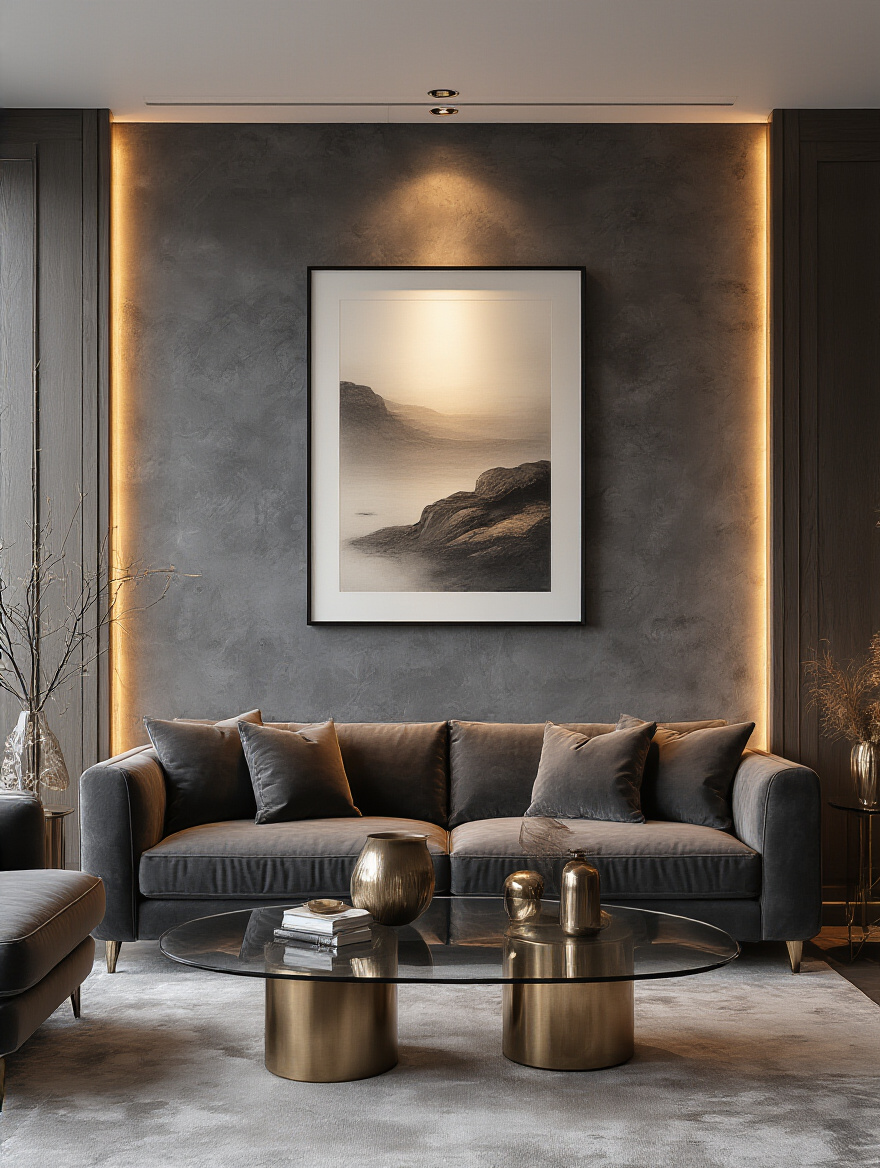
Without accent lighting, even the most beautiful objects can get lost in the general wash of ambient light. But a small, dedicated picture light or a recessed spotlight aimed just right can transform them. It says, “Look here. This matters.” This is how you guide the eye around the room and tell a visual story, creating pockets of beauty and meaning.
Finally, we have to talk about the most important light source of all.
17. Maximize the Health Benefits of Natural Light
The most luxurious, healthy, and beautiful light is the free stuff that streams through your windows. Maximizing it should be a top priority. My pet peeve is seeing beautiful windows choked by heavy drapes that block a third of the glass even when they’re open.
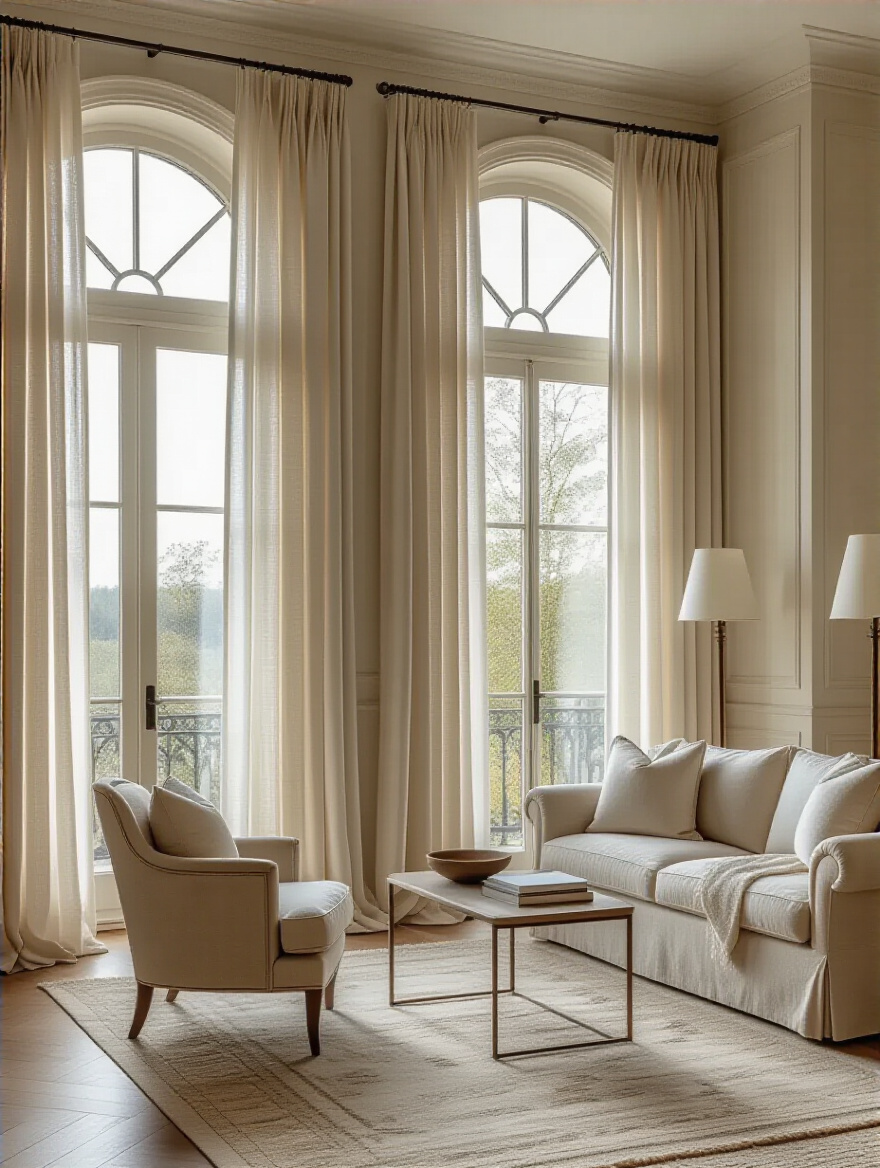
Here’s the shortcut you wish you knew earlier: hang your curtain rods high and wide. Mount the rod 6-12 inches above the window frame and extend it at least 6-12 inches on either side. This allows you to pull the drapes completely off the glass, exposing the entire window and tricking the eye into thinking the window (and the room) is bigger. Layering is key here, too. Pair sheer curtains that filter light during the day with heavier drapes or blinds for privacy at night. And for ultimate wellness, motorize them to open automatically with the sunrise.
Curating Distinctive Accents & Personalized Grandeur
Your room now has a solid foundation, beautiful materials, and incredible lighting. This final step is about infusing it with you. It’s about choosing objects and accents that tell your story, bring you joy, and complete the sensory experience. This isn’t about clutter; it’s about curating meaning.
18. Express Yourself with Large-Scale Statement Art
Please, I beg you, do not buy generic “art” from a big box store just to fill a wall. Art should be personal. It should be something that moves you, makes you think, or simply makes you happy every time you look at it. A single piece of large-scale art that you truly love has more power than a dozen small, meaningless pieces.
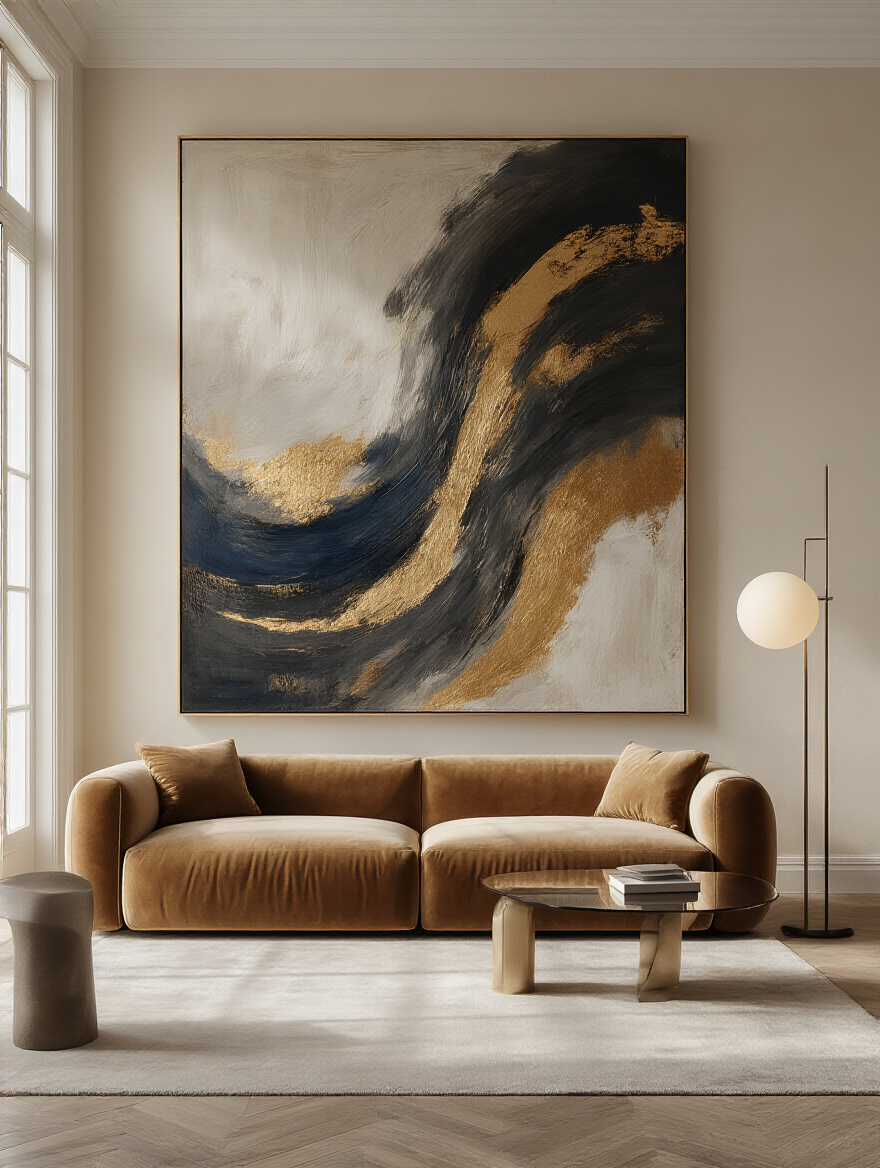
Choosing a large piece solves a lot of design problems. It instantly creates a focal point, fills a large empty wall without creating clutter, and can set the entire color palette and mood for the room. I once worked with a client who was paralyzed by indecision until she fell in love with a huge, abstract, calming blue painting. Suddenly, everything clicked. The painting became her “feeling board” made real, and every other choice became easy. Trust your gut, and invest in something that speaks to your soul.
To complement your art, let’s add some three-dimensional interest.
19. Display Sculptural Objects That Invite Touch
Our homes have become so two-dimensional—all flat screens and smooth walls. It’s essential to bring in objects with interesting forms and textures that engage our sense of touch and add a layer of sculptural beauty. These don’t have to be expensive gallery pieces; they just need to have a form you find beautiful.

A twisted piece of wood from a beach vacation, a smooth ceramic vase made by a local artisan, a collection of rounded stones in a bowl—these objects break up the monotony of flat surfaces. They create beautiful shadow play and give your eye something interesting to land on. The key is to embrace the “less is more” philosophy. One or two truly exceptional, beautifully-formed objects on a console or coffee table will have far more impact than a cluttered collection of small trinkets.
Now, let’s engage another powerful, and often forgotten, sense.
20. Create an Olfactory Signature with Natural Scents
You can have the most beautiful room in the world, but if it smells stale or like artificial air freshener, the illusion is shattered. Scent is our most primitive sense and is directly wired to the parts of our brain that control memory and emotion. Creating a signature scent for your home is one of the most subtle yet profound ways to craft a luxurious, memorable experience.

But you have to be careful. The BS everyone falls for is plug-ins and synthetic fragrance candles, which are often full of phthalates and other toxins you don’t want to be breathing. True scent-scaping comes from natural sources. Use a high-quality ultrasonic or nebulizing diffuser with pure essential oils—think calming lavender and cedarwood for the evening, or uplifting citrus for the morning. Fresh flowers or a simmer pot on the stove also work beautifully. It’s an invisible layer of design that makes a massive impact.
To keep your beautiful sanctuary looking its best, you need to master the art of hiding things.
21. Integrate Seamless Storage to Calm Your Mind
Visual clutter equals mental clutter. Period. One of the greatest luxuries you can give yourself is a calm, uncluttered environment. The best way to achieve this is with seamless, built-in storage that feels like part of the home’s architecture, not just a piece of furniture you bought to hide your junk.
A beautiful wall of custom cabinetry can house the TV, the media components, the books, the kids’ toys—all of it—behind clean, elegant doors. It creates an incredible sense of peace and order. When everything has a designated home, tidying up becomes effortless. It allows your curated art and sculptural objects to be the heroes of the room, rather than competing with a pile of mail or a tangle of electronic cords.
Another key architectural feature that deserves special attention is the fireplace.
22. Make the Fireplace a Soulful Centerpiece
The fireplace is the modern-day version of the tribal campfire. It’s a primal gathering spot that signifies warmth, safety, and community. Don’t treat it like just a place to hang your TV. Give it the presence it deserves. Turning your mantel into a powerful focal point can anchor the entire room.

This can be as simple as painting it a dramatic, contrasting color or as involved as creating a custom surround from a beautiful piece of natural stone or wood. The goal is to make it feel intentional and special. Then, adorn it simply. A single large mirror or piece of art is often all you need. The fireplace is the heart of the home; make it a beautiful one.
Finally, let’s bring all of these systems together with effortless technology.
23. Implement Smart Home Automation for Ultimate Ease
True luxury is not having to think about things. It’s an environment that anticipates your needs. This is the promise of well-designed smart home automation. It’s not about flashy tech for the sake of it; it’s about removing the small, daily frictions from your life.
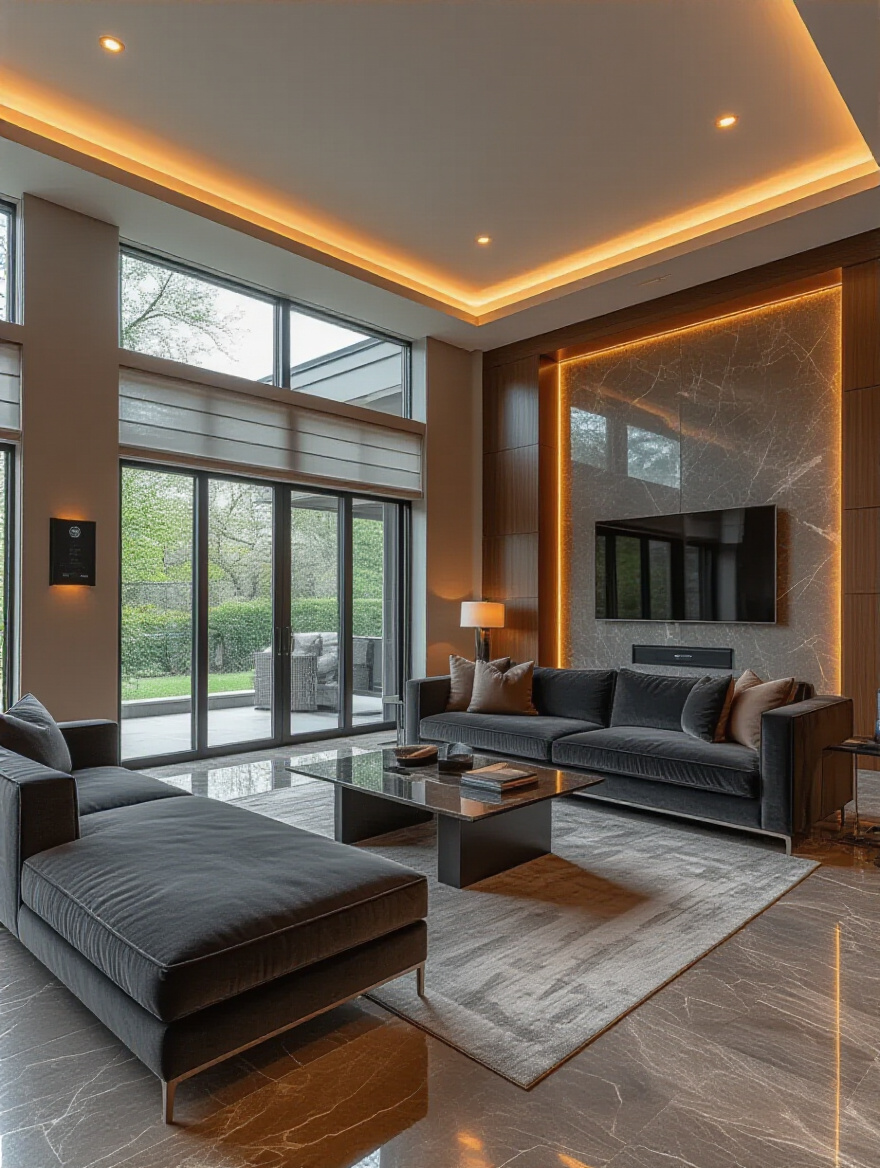
Imagine pressing one button labeled “Movie Night.” The lights dim to a warm glow, the shades lower, the TV turns on, and the sound system activates. Or a “Good Night” scene that turns off every light in the house and adjusts the thermostat. By integrating your lighting, shades, climate, and entertainment into one simple, intuitive system, you free up your mental energy for the things that actually matter. That effortless control is the final layer in creating a home that truly serves you.
Conclusion: The Ultimate Luxury is Your Wellbeing
As you can see, creating a truly luxurious living room is so much more than a shopping list. It’s a deeply personal process of curating an environment that supports you on every level—physically, mentally, and emotionally. It’s about a sofa that doesn’t poison your air, light that syncs with your body’s natural rhythms, and textures that calm you at the end of a long day.
Forget the trends and the pressure to have a home that looks like a magazine cover. Focus instead on how your home makes you feel. A space that is a genuine sanctuary, a true reflection of your story, and a foundation for your wellbeing—that is the most magnificent masterpiece you could ever hope to create.
